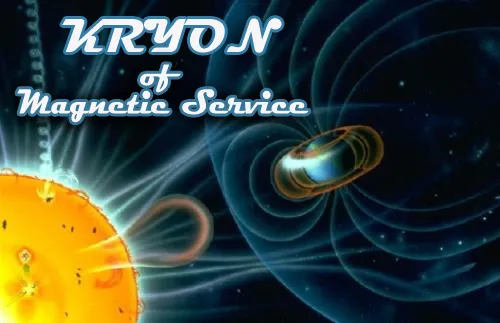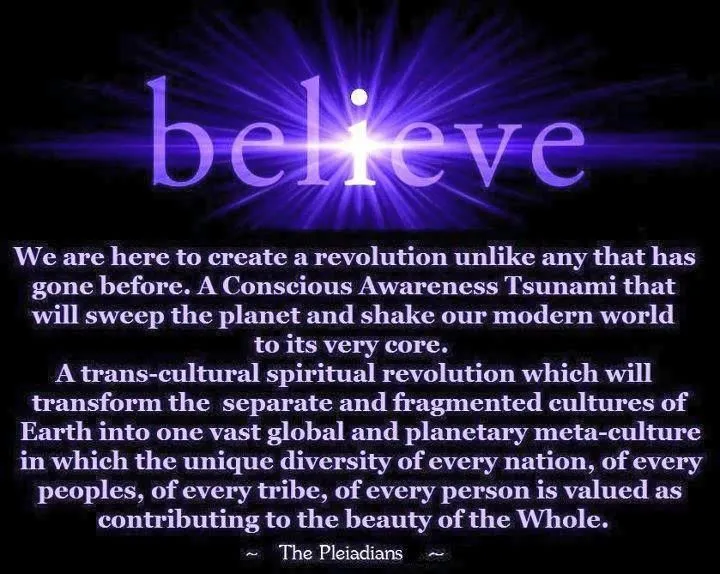
In part one we discussed various aspects of the Kekistanian hive mind and some of the features of their decentralized organization which define it as an emerging culture.
In part two we are going to discuss the entity known as Kryon and the lightworker culture which has emerged over the last three decades.

While the Kekistanians are a relatively new internet based culture, the Lightworkers or Indigo culture began in 1970's (or much much earlier if you understand their belief system.)
The idea is based on concepts developed by Nancy Ann Tappe and further developed by Jan Tober and Lee Carroll. The concept of indigo children gained popular interest with the publication of a series of books in the late 1990s and the release of several films in the following decade. A variety of books, conferences and related materials have been created surrounding belief in the idea of indigo children and their nature. The interpretations range from their being the next stage in human evolution, in some cases possessing paranormal abilities such as telepathy, to the belief that they are more empathetic and creative than their peers.
We have been studying a number of different emerging cultures for our memetics research program and the Lightworker culture is one we discovered only more recently, during the final stages of our research project into the properties and durability of ancient religious memes.
There are some interesting correlations in our findings on the durability of ancient spiritual memes and the concepts presented by Lee Carroll and other modern thinkers concerning the function of the pineal gland.
That's another topic for a different time. For The purpose of this article we want to specifically examine Kryon vs Kek and compare the ideas of their cultures.
The Indigo and Kekistanian culture both have quite a few memes in circulation but the Indigo culture has developed more organized sets of meme complexes.
This is largely due to the purpose around which each culture has formed. Kekistanians are much more focused on politics and anti-censorship, Indigos are primarily focused on personal development.
One of the reasons the Indigo culture has produced so many memes and meme complexes is due to the fact that many of the leading members of their culture engage in two specific meta-physical practices called Channeling and auto-writing. These are methods whereby a person claims to enter into an altered state of consciousness and either write, or speaks for non-physical entities like Kryon.
This has the effect of making the Indigo culture output a great deal of memes and meme complexes because of the nature of their spiritual beliefs and creative modes of expression.

As a new and de-centralized group, the Kekistanians are much more difficult to gauge in their cultural ideologies which are still developing and smothered in satire. The Indigos have a 25 year history and multiple meme complexes available for readership and It appears that the Indigo culture is starting to mature and excellerate growth after a long period of slowly propagating and replicating memes throughout the 80's and 90's.
The Indigos 25 year history of evolving meme complexes gives us fascinating research material for new areas of culture science research. One of the things which makes the Indigo cultures spritual practice unique today, is that they believe that it's possible to produce new holy books and spoken word of God.
This allows their culture to create new sets of meme complexes with value and cultural significance, and consistently build upon those memes in ways which are forbidden by the doctrines of the other major religions.
Another unique aspect of the Indigos cultures spritual practice involves the blending of science and technology information into their Channeling sessions. This gives their culture the ability to attract some scientists and thinkers who are able to approach the meta-physical aspect of the culture with an open mind.
In part 1 of this series, we mentioned that there is a possible bias in human culture growth which may provide an answer to some of our greatest challenges. Identifying the exact source of this bias is not going to be easy, but right now we just know it seems to be there.
The pineal gland and the possibility that it somehow gives us access to a collective of higher intelligence, even if only for brief moments, could explain the bias we see in the math underlying our culture growth research, until we can rule out that it's not some other function of the human mind/consciousness which is creating the bias, we cannot say that we know for sure that the Indigo culture has the answer.
Regardless of what is actually causing the bias we are detecting in culture growth measurements, it points to the exciting possibility that humans may be evolving into more empathetic beings. If I had to personally pick between joining the Kekistanian culture or the Indigo culture after studying both for some time, I'd have to pick the Indigo culture.
Kryon may be strange to listen to for many people, but the underlying message and intent of this entity or the human representing Kryon Is one of peace and inclusion. Many of Kryons memes and words encourage self esteem and self worth while also making practical preparations for a planetary shift in weather, global politics, and consciousness.
According to some of the Kekistanians, Donald Trump is the current avatar for the Egyptian deity known as KEK, and their culture announced itself to the world using highly questionable forms of memetic Warfare propaganda to support his election. Their message thus far has been one of promoting chaos in order to hasten the collapse of old political power structures and they built the foundation of their culture trolling for Trump.
The internet is a Petri dish for human culture growth. Understanding how hive minds naturally form as a function of culture exchange can help us modify certain corners of the net to enhance human culture growth for business and social applications. The idea should never be to control the internet or create a system whereby everyone is forced into one particular culture. By gaining a better understanding of the cultural sciences, we can slowly work to improve internet conditions to support the growth of superior human culture.
Thanks for reading! If you like this article and want to learn more about culture science and memetics, please upvote and follow + subscribe to TheOMWC Patreon blog. You can also find us on twitter @ the_omwc